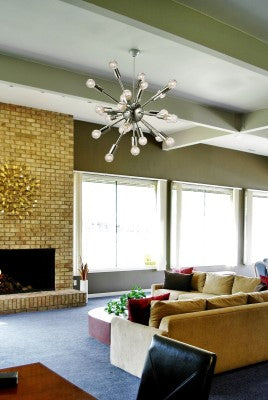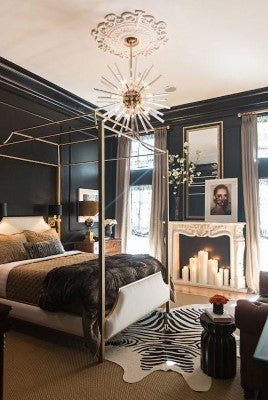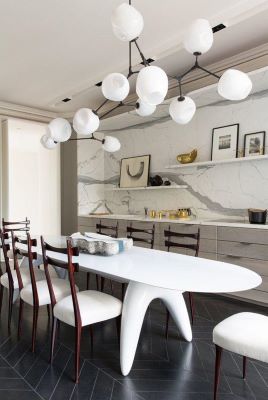-
Collections
Quirky contemporaryFull collectionMajestically ModernFull collectionArtisanal OriginalFull collection
- Categories
- Room
- Inspiration
To light up your living spaces, there is no one-size-fits-all. Every room needs a different sort of lighting depending on the ambiance and activities that goes on inside. Here is some easy to follow advice for the five key spaces in your home.
Dining Room
To draw people in, make the table the brightest spot in the room. Use a chandelier or a pendant above the table but limit the total wattage to an equivalent of 100W. Elsewhere in the room, indirect lighting is best, it’s relaxing and flattering. Give the space a subtle glow with a pair of small table lamps on a sideboard or matching sconces on the wall above. 
Living Room
Light three of the four corners, focusing one of those lights on an object like an art object, a plant or a striking chair. Use a combination of table lamps and floor lamps, some with a downward glow and some that shine upward. Allow for reading in as many seats as possible with down-glowing lamps on three-way switches. If you have an overhead fixture, it is suggested to put it on a dimmer.
Bedroom
Aim for a cozy, insular atmosphere. Place reading lamps or sconces by the bed, but not pointed directly at it. If you have recessed or track fixtures, angle them away from the bed toward the dressing area. On a low table, include a small, intimate lamp with a tinted low-wattage/lumen bulb that mimics candlelight.Bathroom
The best choice for applying makeup is sidelights, such as a pair of sconces flanking the mirror. An overhead light helps fill in any shadows on your face and also fully illuminates the room which is important when cleaning. In a large space, you might also want a light directly over the shower.Kitchen
Focus on overhead lighting and use a dimmer that you can turn up when cooking, plus add lower sources to illuminate work surfaces. Use pendants, under-cabinet lights, and a sturdy table lamp.
Leave a comment







